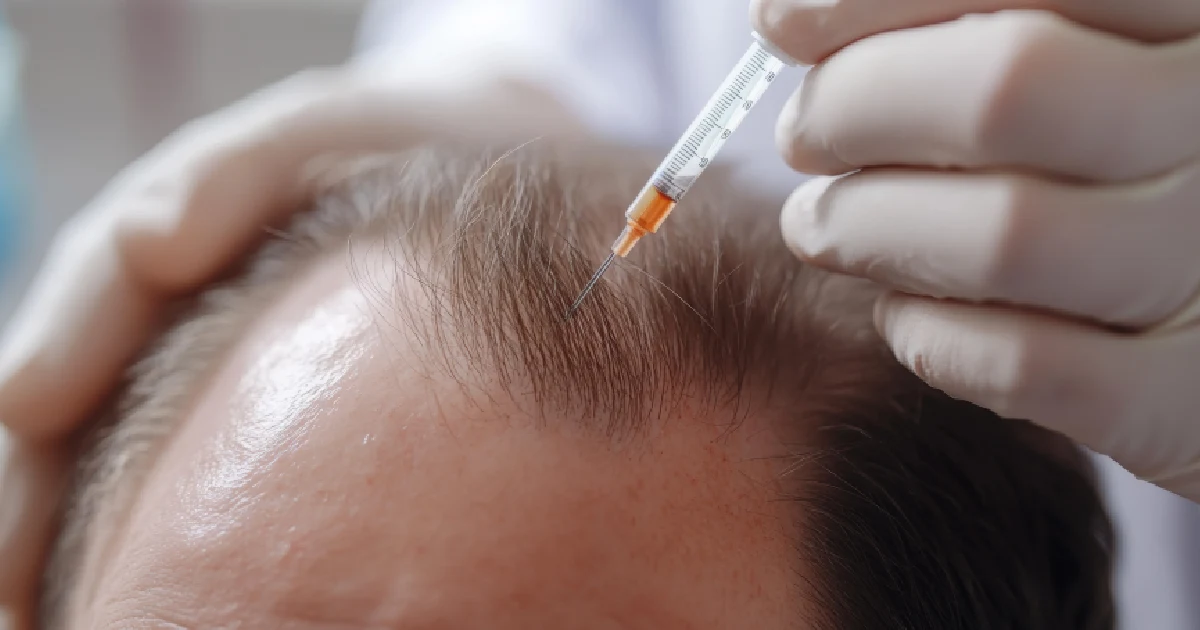Exosomes are small, extracellular vesicles that act as messengers between cells. They carry proteins, lipids, and RNA that can affect surrounding cells. Through intercellular communication, they guide cellular activities like inflammation reduction, immune response, and tissue repair.
A stem cell, on the other hand, is a specialized cell that can develop into different types of cells within the body. Since stem cells are versatile and can regenerate damaged tissues, they’re at the forefront of regenerative medicine.
When these two elements are combined, the results are amazing. Exosomes carry vital instructions, while stem cells provide the building blocks for regeneration and repair. Their combination offers hope for addressing a wide range of conditions.
How Exosomes Enhance Stem Cell Therapy
Stem cell therapy alone has shown significant promise in treating injuries and degenerative diseases. However, when paired with exosomes, the treatment’s effectiveness can be significantly amplified. Here’s how exosomes enhance the therapeutic benefits of stem cell therapy:
Enhanced Communication and Signaling: One key role of exosomes is to facilitate communication between cells. Exosomes carry essential signaling molecules that can direct cells on how to behave. In stem cell therapy, exosomes help improve the interaction between transplanted stem cells and the surrounding tissue. By delivering precise instructions to the target area, exosomes ensure that stem cells perform their regenerative functions more efficiently.
Reduced Inflammation: Chronic inflammation is often a significant barrier to healing. Exosomes are known for their potent anti-inflammatory properties, which help create a more conducive environment for stem cell therapy to work effectively. By reducing inflammation, exosomes enhance tissue repair and promote faster recovery times.
Promoting Tissue Repair and Regeneration: Stem cells can transform into different types of cells, enabling them to replace damaged tissues. Exosomes, acting as cellular messengers, help direct these stem cells to the damaged area, where they can start the repair process.
Minimizing Risks and Enhancing Safety: One of the advantages of combining exosomes with stem cell therapy is the reduction of potential complications. Exosomes are naturally derived from cells and do not contain DNA, which makes them a safer option with a lower risk of immune rejection. This combination also minimizes the need for higher quantities of stem cells, leading to a more balanced and less invasive treatment.
Accelerated Healing Process: Exosomes help speed up the healing process by optimizing the conditions for tissue repair and enhancing cellular communication. Whether recovering from an injury or managing a degenerative condition, patients often experience faster improvements in symptoms and overall function when exosomes are integrated into their stem cell therapy.
The Benefits of Exosomes and Stem Cell Therapy
Given the synergistic effects of exosomes and stem cells, it’s clear that this combination offers a wide range of benefits. Let’s explore some of the key advantages of exosomes and stem cell therapy:
1. Versatility in Treating Various Conditions
One of the most notable benefits of exosomes and stem cell therapy is its versatility. From orthopedic injuries like joint pain and tendonitis to more complex conditions such as autoimmune disorders and neurodegenerative diseases, this treatment has shown potential across multiple medical fields.
2. Personalized Treatment Plans
Exosome and stem cell therapy can be tailored to meet each patient’s specific needs. Whether you’re seeking pain relief, anti-aging benefits, or rehabilitation after an injury, the treatment can be adjusted to deliver the best possible outcome for your unique situation.
3. Minimally Invasive Procedure
Unlike traditional surgeries, which often involve significant risks and long recovery times, exosome and stem cell therapy are minimally invasive. Patients typically experience little to no downtime, making it an attractive option for those looking to avoid the complications associated with more invasive procedures.
4. Long-lasting Results
The regenerative properties of exosomes and stem cells often lead to long-term improvements. Patients who undergo this therapy commonly report lasting relief from symptoms and better overall function. The treatment’s capacity to address the underlying source of the issue rather than only treating its symptoms also produces sustainable health advantages.
5. Promoting the Body’s Natural Healing Processes
Exosomes and stem cell therapy offer a natural approach to treatment by harnessing the body’s inherent ability to heal itself. This makes the therapy appealing to those looking for holistic solutions that align with their body’s biology.
What are the applications of Exosomes and Stem Cell Therapy?
Given its wide-ranging benefits, exosome and stem cell therapy is being utilized in various medical applications:
- Orthopedic and Sports Injuries: This therapy can significantly benefit conditions such as arthritis, tendon injuries, and ligament damage. By enhancing tissue repair and reducing inflammation, patients can experience faster recovery and improved joint function.
- Degenerative Diseases: Exosome and stem cell therapy are increasingly being explored as potential treatments for neurodegenerative diseases like Alzheimer’s, Parkinson’s, and multiple sclerosis. The therapy’s ability to support neuron repair and reduce inflammation offers hope for managing these complex conditions.
- Skin Rejuvenation and Anti-Aging: The cosmetic applications of this therapy are also noteworthy. Exosomes and stem cells can rejuvenate the skin, reduce fine lines, and improve skin texture. This therapy offers a natural and effective approach to maintaining a youthful appearance by stimulating collagen production and enhancing skin cell turnover.
- Autoimmune Disorders: By modifying the immune response and lowering chronic inflammation, exosome and stem cell therapy show promise in treating autoimmune diseases, including lupus and rheumatoid arthritis.
- Cardiovascular Health: Research into how exosomes and stem cell therapy can repair damaged heart tissue, improve circulation, and enhance overall cardiovascular health is ongoing.
How the Procedure Works
Your LA Ageless Medical Aesthetics provider will conduct a thorough health evaluation, discuss your symptoms, and determine the best course of action. This step ensures that the therapy is customized to meet your needs.
If stem cells are used, they are typically harvested from your body, often from fat tissue or bone marrow. Allogeneic (donor-derived) stem cells may sometimes be used, depending on the treatment plan.
Once harvested, the stem cells and exosomes are processed in a specialized lab. This involves isolating the most potent cells and vesicles for therapeutic use.
The exosomes and stem cells are then injected into the target area, whether a joint, muscle or other tissue requires repair. The procedure is usually quick and involves minimal discomfort and downtime.
Recovery is typically fast, with most patients resuming regular activities within a day or two. Depending on the condition being treated, follow-up appointments may be scheduled to monitor progress.
Final Thoughts
Exosome and stem cell therapy represent the future of regenerative medicine. Combining the signaling power of exosomes with the regenerative capabilities of stem cells, this innovative treatment offers a holistic approach to healing. Whether you’re seeking relief from chronic pain, exploring anti-aging solutions, or looking for a natural way to promote your body’s healing processes, exosome, and stem cell therapy may be the answer you’ve been searching for.
If you’re ready to explore the benefits of exosomes and stem cell therapy, contact LA Ageless Medical Aesthetics today to schedule your consultation. Our expert team is here to guide you through the process and help you achieve optimal health and well-being. Discover the transformative power of regenerative medicine!








